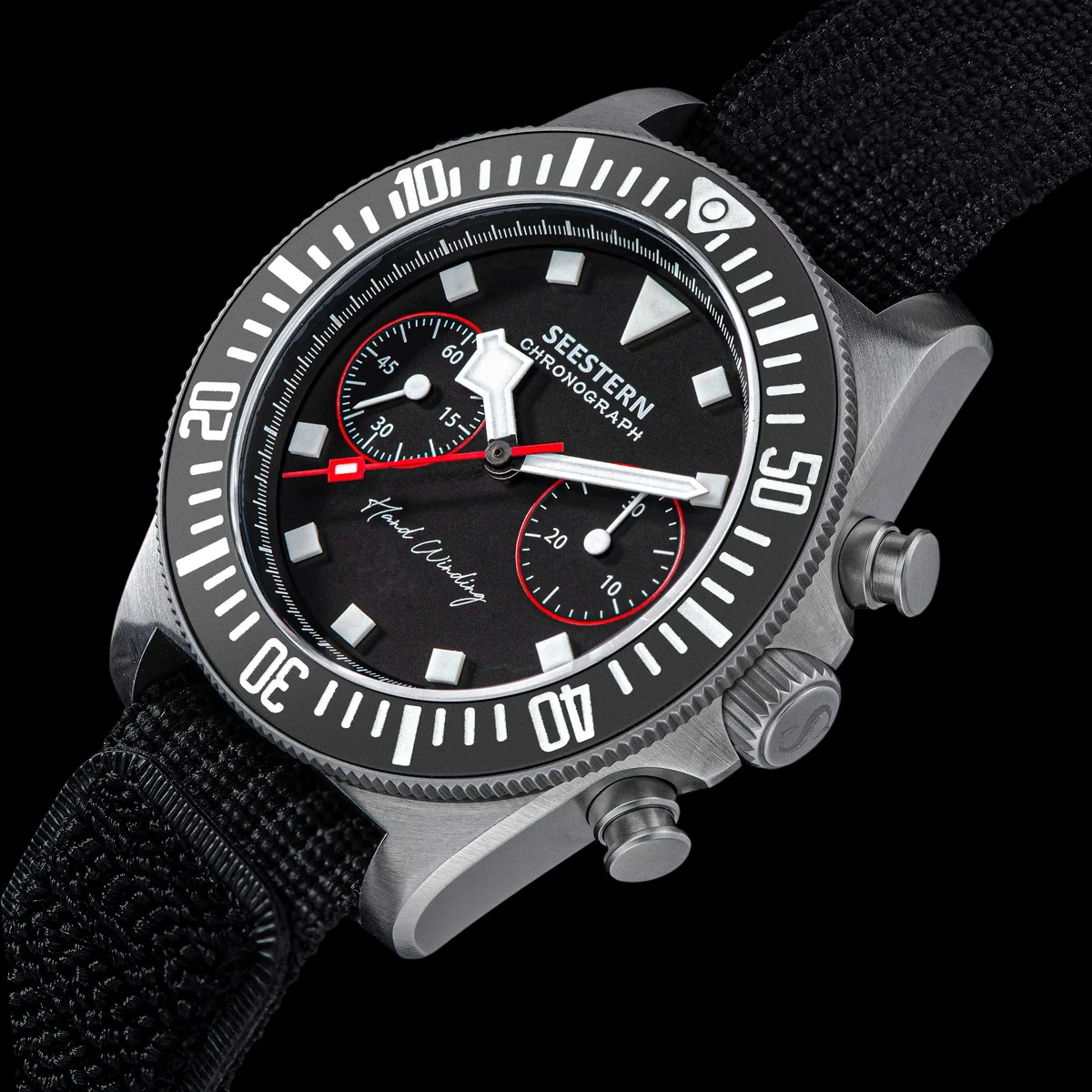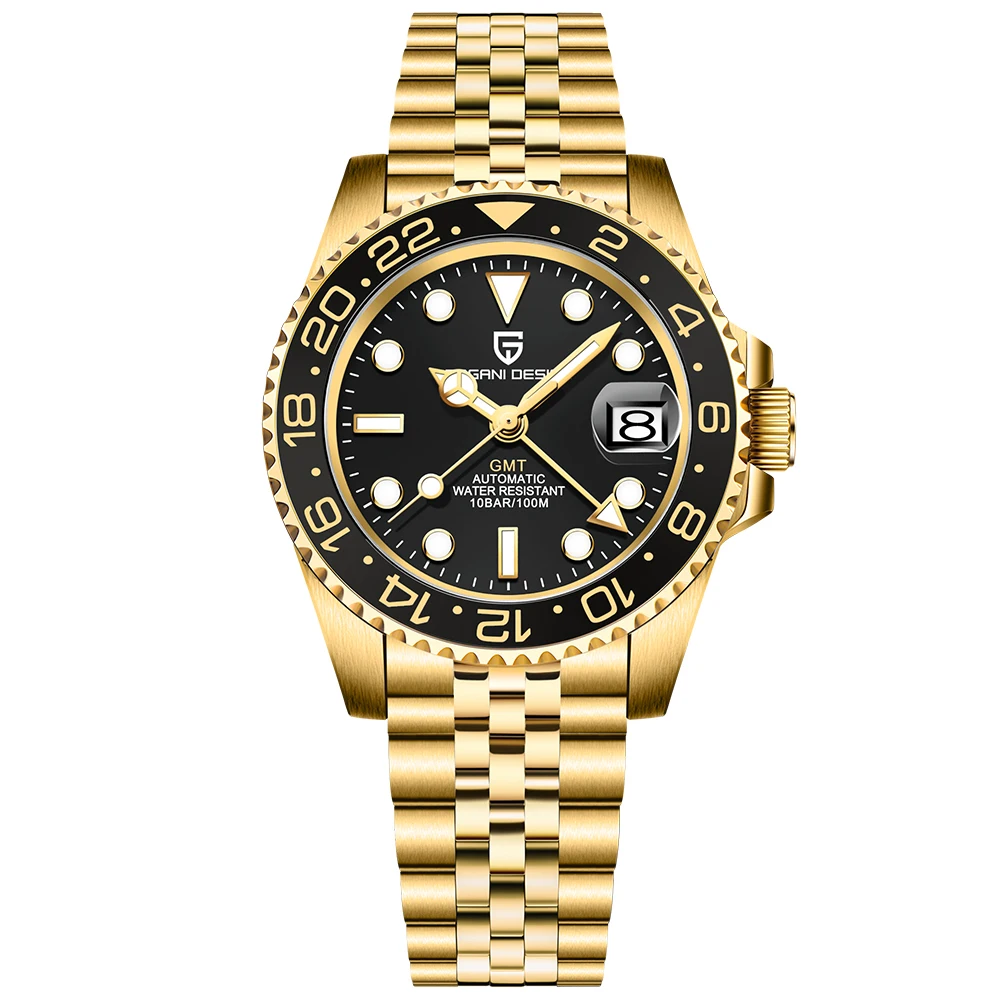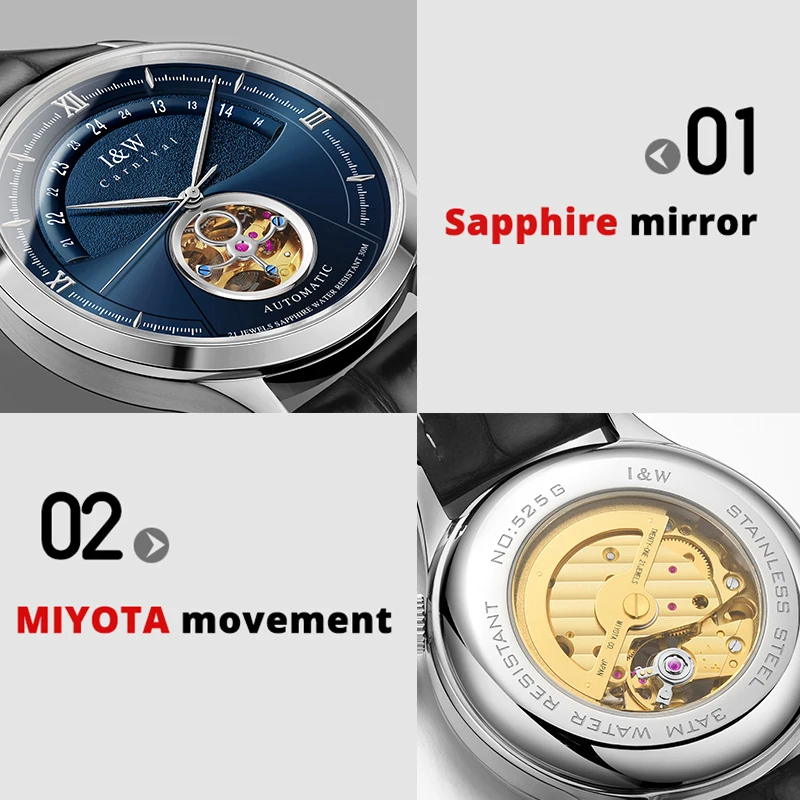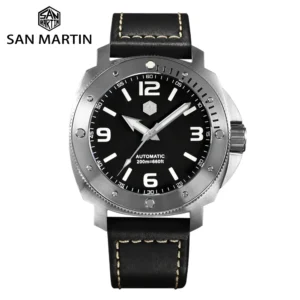Introduction: Chronographs and the Skies
Chronograph watches stand as remarkable precision instruments with a rich heritage in aviation history. These specialized timepieces—distinguished by their stopwatch functionality alongside regular timekeeping—became essential tools for pilots throughout the 20th century, enabling precise navigation calculations, fuel consumption monitoring, and mission timing long before digital instruments dominated cockpits.
For today’s watch enthusiasts who travel, questions naturally arise about how these mechanical marvels respond to modern air travel conditions. Will airport security damage your beloved timepiece? Can cabin pressure affect its accuracy? These concerns are understandable considering the investment and emotional attachment chronograph owners develop with their watches.
The good news is that modern chronograph movements are generally robust enough to withstand typical air travel conditions, though understanding potential impacts can help ensure your timepiece remains reliable throughout your journey. The history of dive watch engineering shows similar concerns were addressed in creating resilient timepieces, and the comprehensive guide to chronograph use in aviation demonstrates how these watches have evolved to meet demanding conditions.
In this guide, we’ll explore everything from airport security systems to cabin pressure effects, giving you the confidence to travel with your chronograph companion.

Airport Security Systems and Your Chronograph
Airport security represents the first potential challenge for your chronograph during air travel. Understanding how these systems work can alleviate concerns about potential damage to your timepiece.
X-ray Scanners
The X-ray scanners used for carry-on and checked luggage emit low-level radiation to create images of your belongings. The good news for watch enthusiasts is that these X-rays aren’t powerful enough to damage watch movements. Unlike medical X-rays, airport scanners use radiation levels approximately 1/1000th the strength, which won’t affect your watch’s components, lubricants, or functionality.
Millimeter Wave Body Scanners
These advanced scanners, which passengers walk through with arms raised, use non-ionizing electromagnetic waves that bounce off objects to create an image. These waves operate at frequencies between 30-300 GHz and have no documented effect on mechanical watch movements. Your chronograph can safely pass through these scanners without concern.
Metal Detectors
Walk-through gates and handheld wands use electromagnetic fields to detect metal objects. While these create magnetic fields, they’re generally too weak (typically under 0.5 millitesla) to magnetize watch components. However, older or particularly sensitive movements might experience temporary effects, which leads us to the primary concern: magnetism.
The Magnetism Concern
Magnetism poses the most significant security-related risk to mechanical watches. When watch components (particularly the balance spring) become magnetized, they can stick together, affecting the watch’s timekeeping ability. Modern chronographs increasingly incorporate anti-magnetic features, but not all are equally protected. The inner workings of chronograph watches are particularly complex, making them potentially more susceptible to magnetic fields than simpler timepieces.
For travelers concerned about magnetism, automatic chronograph watches with enhanced anti-magnetic properties offer additional peace of mind during your journey.
Signs of Watch Magnetization and Solutions
Knowing how to identify if your chronograph has been magnetized is essential knowledge for travelers. Here are the common symptoms:
- Sudden time gain: A magnetized watch typically runs significantly faster, often gaining several minutes per day.
- Erratic timekeeping: The watch might show inconsistent timing patterns throughout the day.
- Stopped movement: In extreme cases, magnetic fields can cause the watch to stop completely.
The technical reason behind these symptoms involves the watch’s hairspring. When magnetized, the coils of the hairspring can stick together, effectively shortening the spring and causing the balance wheel to oscillate faster. This increases the watch’s beat rate and makes it run ahead of time.
Solutions for Demagnetization
If you suspect your chronograph has been magnetized during travel, several options are available:
- Professional demagnetization: Most watchmakers and watch service centers have demagnetizing tools and can quickly resolve the issue.
- Home demagnetizers: Compact demagnetizing devices are available for purchase online for frequent travelers.
- Smartphone apps: Some apps can detect if your watch is magnetized, though they cannot fix the issue.
Preventative Measures
To protect your watch during travel:
– Consider a watch with enhanced durability factors found in rugged watches
– Use a watch travel case with magnetic shielding
– Keep your watch away from electronic devices with speakers or magnets
– If concerned, simply place your watch in your carry-on bag when passing through security
Cabin Pressure and Altitude Effects on Chronographs
Commercial aircraft typically maintain cabin pressure equivalent to 6,000-8,000 feet above sea level, regardless of the actual cruising altitude of 30,000+ feet. This creates a pressure differential that’s worth understanding for chronograph owners.
Modern watch cases are engineered to handle these pressure changes with ease. Most quality chronographs are designed with pressure resistance significantly exceeding what you’ll encounter in an aircraft cabin. To put this in perspective, the pressure difference between sea level and a typical aircraft cabin (around 0.8 atmospheres vs. 1 atmosphere) is far less than what a watch rated for even minimal water resistance can handle.
It’s important to distinguish between water resistance and pressure resistance. While related, they aren’t identical concepts:
- A watch with 30 meters water resistance can easily handle airline cabin pressure changes
- The gaskets and seals that keep water out also manage air pressure differentials
- Modern case construction methods ensure structural integrity during pressure changes
Historically, early pilot watches were designed for unpressurized cabins and much more extreme conditions than today’s travelers face. The evolution of these timepieces has only improved their resilience to changing pressure conditions. For those seeking exceptional pressure resistance, professional-spec dive watches offer redundant protection systems that easily accommodate air travel conditions.
Vibration and G-Forces: Impact on Chronograph Mechanisms
Aircraft vibrations and g-forces represent another potential concern for chronograph owners. During a typical commercial flight, passengers experience various forces:
- Takeoff and landing: Approximately 1-2G forces (1G being normal earth gravity)
- Turbulence: Brief forces typically under 1.5G
- Normal cruising: Minimal vibration and standard 1G
Modern chronograph movements incorporate sophisticated shock protection systems designed to absorb these routine forces. Systems like Incabloc, Kif, and Etachoc use spring mechanisms to protect the delicate balance staff—the component most vulnerable to shock damage. When a shock occurs, these systems allow the balance wheel to move slightly within its mounting, absorbing energy that might otherwise damage the pivots.
Chronograph complications are inherently more complex than time-only movements, with additional parts that could potentially be affected by strong shocks. However, contemporary chronograph pilot watches are engineered specifically for aviation environments and include enhanced shock resistance.
For perspective, the forces experienced in commercial flight pale in comparison to those in aerobatic or military aviation, where pilots may experience sustained forces of 5-9G. If chronograph watches can be designed for those environments, your timepiece will likely handle your next flight to Chicago without issue.

Temperature Fluctuations and Chronograph Performance
Aircraft cabins maintain temperatures typically between 65-75°F (18-24°C), which falls well within the optimal operating range for mechanical watches. However, temperature variations can still affect chronograph performance in subtle ways.
Mechanical watch movements respond to temperature changes through the expansion and contraction of components—particularly the balance spring. When metal heats up, it expands slightly; when cooled, it contracts. These minute changes can affect a watch’s timekeeping precision.
Quality chronograph movements incorporate temperature compensation methods:
– Bi-metallic balance wheels that counteract temperature effects
– Special alloys in the balance spring that minimize expansion/contraction
– Materials with opposing thermal properties to cancel out temperature-related timing changes
For context, watches certified by COSC (Contrôle Officiel Suisse des Chronomètres) must maintain accuracy within strict parameters when tested at temperatures ranging from 8°C to 38°C (46°F to 100°F)—a much wider range than you’ll encounter in aircraft cabins.
The lifespan of automatic watches can be significantly extended by avoiding extreme temperature changes, making the controlled environment of an aircraft cabin generally favorable for mechanical timepieces.
Chronograph Movement Types and Air Travel Reliability
Not all chronograph movements are created equal when it comes to travel reliability. Understanding the different construction methods can help you determine how your watch might perform during air travel.
Integrated vs. Modular Construction
| Construction Type | Durability Characteristics | Travel Considerations |
|---|---|---|
| Integrated | Movement designed from ground up as chronograph | Generally more robust, fewer points of failure |
| Modular | Chronograph mechanism added to base movement | More parts, potentially more vulnerable to shocks |
Integrated chronograph movements tend to be more robust for travel as their components were designed to work together from the beginning. Modular constructions, while still reliable, have additional layers and connection points that could potentially be affected by strong vibrations or shocks.
Column Wheel vs. Cam-Actuated Systems
Column wheel chronographs offer smoother operation and are typically found in higher-end timepieces. Their precision engineering generally makes them more reliable over time, though modern cam-actuated systems have largely closed this gap through improved manufacturing techniques.
Proper servicing significantly impacts travel reliability regardless of movement type. A well-maintained chronograph should be serviced every 4-7 years, but frequent travelers might consider slightly more regular maintenance to ensure optimal performance.
Vintage chronographs deserve special consideration when traveling. While these timepieces possess immense charm and history, their aged components and often less robust shock protection systems make them more vulnerable to travel conditions. For detailed information on different types, exploring chronograph movement watches provides valuable insights for enthusiasts.
Anti-Magnetic Features in Modern Chronographs
Modern watchmakers have developed impressive anti-magnetic technologies that benefit frequent travelers. These innovations protect the delicate balance assembly from magnetic fields that might be encountered at airports or on aircraft.
Anti-Magnetic Materials and Technologies
- Silicon components: Silicon balance springs and escapement parts are completely non-magnetic.
- Nivachron™ and similar alloys: Special balance spring materials that resist magnetism while maintaining temperature compensation.
- Soft iron inner cases: Also called Faraday cages, these inner shields redirect magnetic fields around the movement rather than through it.
- Anti-magnetic movement shields: Protective plates strategically placed to guard sensitive components.
Some high-end chronographs now achieve resistance to magnetic fields exceeding 15,000 gauss—far beyond anything you’ll encounter during air travel. For context, a typical refrigerator magnet produces about 50 gauss.
Anti-magnetic certifications like ISO 764 (resistance to 4,800 A/m or approximately 60 gauss) provide assurance that a watch can withstand magnetic fields without significant accuracy loss. Frequent travelers particularly benefit from automatic pilot watches that often incorporate these protective features as standard.
Military Inspired Automatic Watches, Rugged Automatic Watches, Tactical Automatic Watches
Price range: $852.14 through $994.60 Select options This product has multiple variants. The options may be chosen on the product pageAutomatic Chronograph Watches, Chronograph Pilot Watches
Price range: $233.36 through $237.58 Select options This product has multiple variants. The options may be chosen on the product pageClassic Automatic Dress Watches, GMT Automatic Watches, GMT Pilot Watches
Price range: $1,240.86 through $1,463.33 Select options This product has multiple variants. The options may be chosen on the product pageAutomatic Chronograph Watches, Classic Style Dive Watches
$3,053.06 Select options This product has multiple variants. The options may be chosen on the product pageBronze Automatic Watches, Military Inspired Automatic Watches, Professional Spec Dive Watches
Price range: $1,442.21 through $1,442.82 Select options This product has multiple variants. The options may be chosen on the product pageProfessional Spec Dive Watches, Titanium Automatic Watches
$574.74 Select options This product has multiple variants. The options may be chosen on the product page
Practical Tips for Traveling with Chronographs
Wear vs. Pack Decision
Wearing your chronograph through security is generally safe, but if you’re particularly concerned about a valuable or vintage piece, placing it in your carry-on (never checked luggage) offers peace of mind. When worn, your body temperature helps maintain stable timekeeping.Pre-Flight Watch Check
Before traveling, check your watch against a reliable time reference and note any deviation. This provides a baseline to determine if air travel affected your watch’s accuracy.Post-Flight Assessment
After reaching your destination, compare your watch to a reference time again. Minor variations (within 5-10 seconds) are normal; larger discrepancies might indicate magnetization or other issues.Storage During Flight
If not wearing your watch, store it dial-up or crown-up in a protective case. This position minimizes gravitational effects on the movement during flight.International Travel Considerations
For valuable timepieces, consider documentation (purchase receipts, insurance paperwork) to avoid customs issues when crossing borders. Some countries require declaration of items exceeding certain values.Multiple Watch Travel
If bringing several timepieces, dedicated watch rolls or cases with individual compartments prevent watches from contacting each other and causing scratches or damage.
For frequent international travelers, GMT pilot watches offer the added functionality of tracking multiple time zones while maintaining the reliability needed for air travel.
Is My Chronograph Suitable for Frequent Air Travel?
Q: Are modern automatic chronographs generally suitable for air travel?
A: Yes. Contemporary automatic chronographs from reputable manufacturers are designed to withstand the conditions experienced during commercial flights.
Q: Does having a screw-down crown make a difference for air travel?
A: While not essential for air travel, screw-down crowns provide additional protection against accidental adjustment and enhanced water/pressure resistance.
Q: Are vintage chronographs (pre-1990s) safe for frequent flying?
A: They can be, but vintage pieces typically have less shock protection and magnetic resistance. Consider professional inspection before regular travel use.
Q: Do modular chronograph movements handle travel worse than integrated ones?
A: While integrated chronographs are theoretically more robust, well-made modular chronographs from quality brands perform reliably during normal air travel.
Q: Are chronographs with silicon components better for frequent travelers?
A: Yes, silicon components offer superior magnetic resistance and stability—beneficial advantages for travelers passing through airport security systems.
Q: Should I worry about water condensation in my chronograph during flights?
A: Not typically, unless your watch has moisture issues already. Well-sealed watches with proper dive watch technology protect against condensation regardless of altitude changes.
Understanding Water Resistance vs. Air Travel Pressure
Many watch enthusiasts mistakenly believe that high water resistance ratings are necessary for air travel, but this represents a fundamental misunderstanding of pressure dynamics. A watch with even minimal water resistance (30 meters) can easily handle cabin pressure changes.
To put this in perspective: a typical aircraft cabin pressure differential is equivalent to approximately 0.2 atmospheres or the pressure at about 2 meters underwater. This means even entry-level water resistance ratings far exceed what’s needed for air travel.
The primary difference lies in the direction of pressure. Water pressure pushes inward on a watch case from all directions, while air pressure changes during flight create a smaller differential between the air inside and outside the watch case. The timeline of diving watch innovations shows how watch engineering evolved to handle far more extreme conditions than you’ll encounter at cruising altitude.
For frequent travelers, regular gasket inspection and replacement during normal service intervals remain sufficient maintenance to ensure pressure resistance.
Conclusion: Enjoying Your Chronograph at 30,000 Feet
Modern chronographs are remarkably well-equipped to handle the rigors of air travel. From navigating airport security to withstanding cabin pressure changes, these mechanical marvels continue the aviation heritage that defined their development throughout history.
Understanding potential issues—particularly magnetism—and knowing simple solutions empowers you to travel confidently with your timepiece. The satisfaction of glancing at your chronograph while soaring above the clouds connects you to the rich aviation heritage these watches embody.
For the ultimate peace of mind during your journeys, consider rugged automatic watches that incorporate enhanced shock resistance, anti-magnetic properties, and pressure tolerance. These timepieces not only withstand travel conditions but often draw admiring glances from fellow watch enthusiasts at airport lounges worldwide.
With proper care and understanding, your chronograph can be a reliable companion on countless journeys—keeping precise time while carrying forward the legacy of aviation timekeeping that defined these remarkable instruments.







